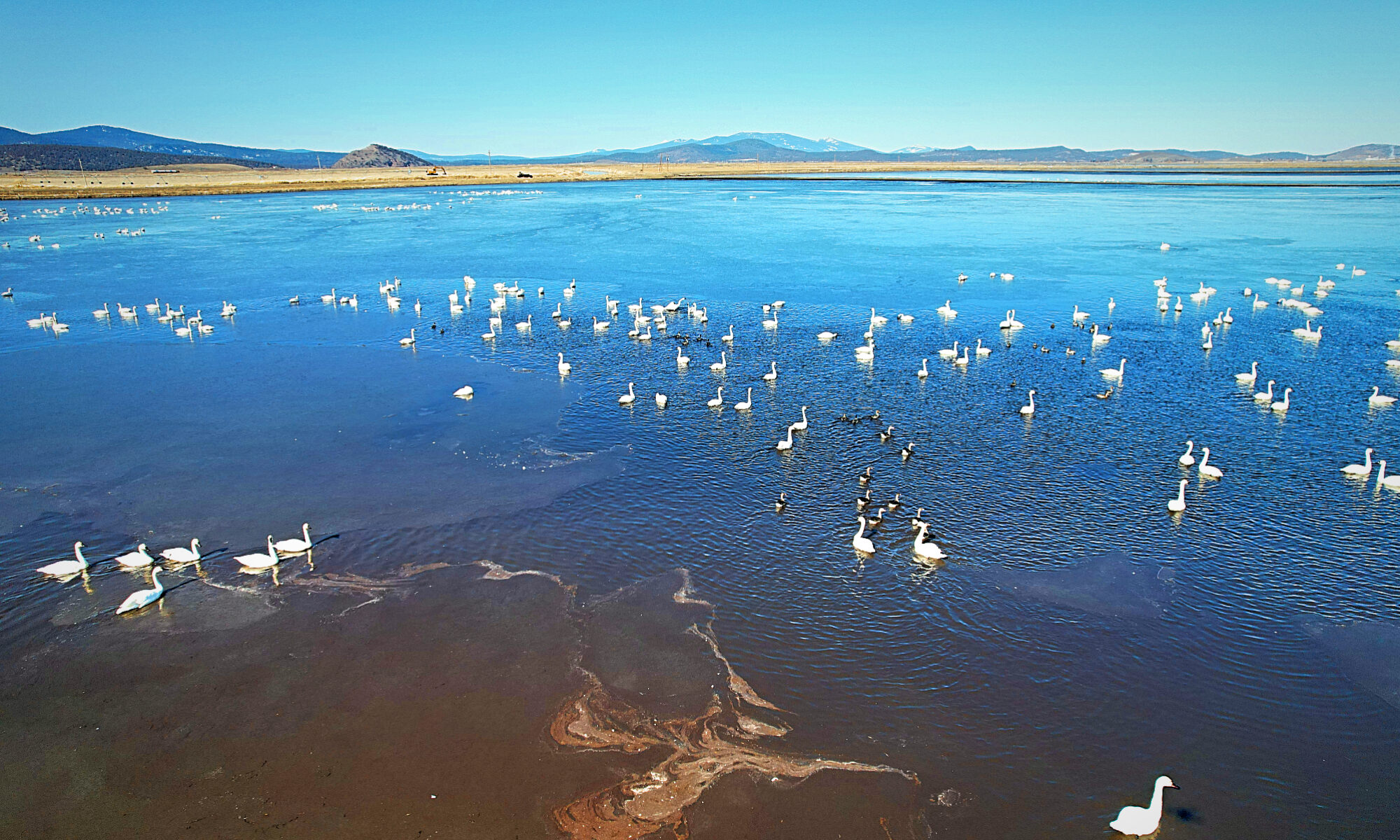The land that makes up the Klamath Drainage District didn’t become the food production powerhouse we know it as today until the California Northeastern Railway Company with the Southern Pacific Railway built a dyke and railroad in 1907, creating a division between Lower Klamath Lake and the Klamath River.
With the construction of the railroad, the water that made up the marshlands of Lower Klamath Lake ceased to naturally flow down the Klamath River during times when water levels were high, with While a portion of the original lake now makes up the Lower Klamath Lake National Wildlife Refuge, the 27,000 acres of land on the Oregon side of the border provide rich farmland where family farmers and ranchers grow cereal grains, a variety of row crops, hay, and run cattle for beef and for dairy. KDD landowners’ ground also provides habitat for the waterfowl traveling the Pacific Flyway and Klamath Basin wildlife that make their homes in the district year-round.
KDD and its landowners have employed sustainable agricultural practices for decades that help keep the rich soils productive, decrease demands on water from Upper Klamath Lake during the growing season, and benefit area wildlife, including sending much-needed water to the Lower Klamath National Wildlife Refuge after the Federal government’s historic dewatering of two Klamath Basin refuges.
Now, KDD is looking at other resilient agriculture projects to complement the district’s sustainable ag practices, improve wetland resilience, and provide benefits to the Klamath Basin ecosystem as a whole.

The Klamath Drainage District has joined with several stakeholders and governmental agencies in a restoration plan that will accomplish many of these goals. Officially called “Replumbing the Klamath for People, Fish, and Wildlife: A Nature-Based Solution for Drought and Desertification in Lower Klamath Lake” and more colloquially as the “KDD Plan”, the restoration effort will reconnect Lower Klamath Lake with the Klamath River, provide access for fish to the Lower Klamath refuge, and provide incentives and protections for KDD landowners.
While the KDD Plan is going through a phase to check its feasibility, many are optimistic about its acceptance and its outcomes.
“As manager of KDD, I’m excited to see how this will benefit not only landowners but the Klamath Basin on the whole,” said Scott White, manager of the Klamath Drainage District. “The farmers in the district have always had an eye on sustainable ag and a genuine interest in taking care of wildlife. I feel the Replumbing the Klamath project accomplishes this and more.”
About the KDD Plan
The Replumbing the Klamath project has several goals aimed at agricultural resilience and sustainability, restoring the health of wetlands of Lower Klamath Lake, and creating habitat for C’waam and Koptu as well as reintroduced salmon.
Items in the plan include reestablishing oxbows around Miller Island, connecting the Lower Klamath Refuge to the Klamath River, creating fish passage from Upper Klamath Lake to the Lower Klamath Refuge, ensuring a reliable source of water for Lower Klamath National Wildlife Refuge, and creating protections for farmers and ranchers in KDD.

The KDD Plan has two tracks. Track One will run from October 1, 2024 through September 30, 2025 and work on the feasibility aspects of Replumbing the Klamath. Track Two will kick off on October 1, 2025 and go through September 30, 2027. In Track Two we will see work begin to create fish passage and water deliveries to Lower Klamath National Wildlife Refuge, the creation of perennial wetlands and connecting Lower Klamath Lake to the Klamath River.
As the restoration plan moves forwards, all of the components will compliment one another. Reestablishing the oxbows through the Miller Island slough and creating fish passage to Lower Klamath Lake will help provide water for the refuge and perhaps aid in creating habitat for returning salmon and Klamath Basin waterfowl. Connecting the Lower Klamath Refuge to the river could help provide cleaner, cooler water to be sent downriver. KDD and its landowners working with various stakeholders on the Lower Klamath Restoration Plan helps build relationships with these groups while ensuring the sustainability of farming within the district.
“This is a great opportunity for KDD to work with a variety of stakeholders to help the Klamath Basin’s ecosystem and to ensure my grandkids and their kids have a chance to farm down here,” said KDD board president, Bill Walker. “This is a win-win for everybody – farmers, fish and fowl.”
The stakeholders include tribal interests such as the Modoc Nation, The Klamath Tribes, and the Yurok Tribe as well as conservation groups like Ducks Unlimited, the Klamath Watershed Partnership, the Willamette Partnership, and several state and federal agencies.
Beyond Replumbing the Klamath, KDD is looking at another project which will add renewable energy to our portfolio while cooling water, preventing evaporation, controlling algae growth in the canals and drains, and ridding the ditches of invasive species, such as yellow-flag irises. As more information for that project comes available, we will provide announcements and updates for it as well.

